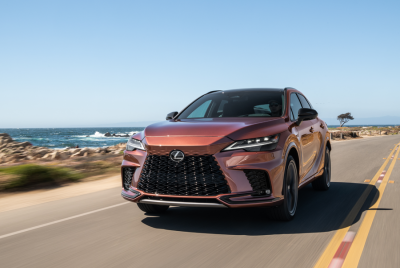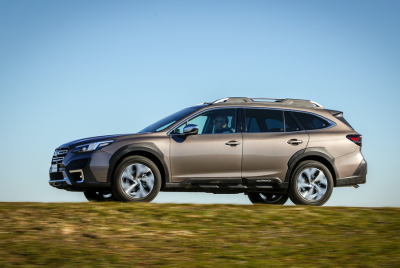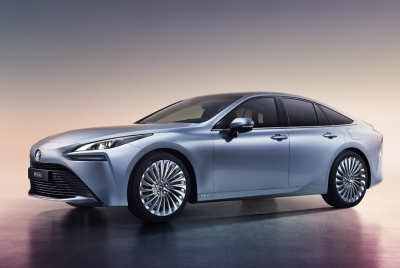After NX and RX, popular SUVs in Toyota’s luxury brand range, Lexus celebrates its thirtieth anniversary with a totally new and compact SUV entrusted with the challenge of imposing itself in the mid-range SUV market, in this case with hybrid traction.
Despite its small size, under 4.5 metres, the UX is part of a large project. Urban X crossover, a rather austere name that continues in the traditional designation of the range, embodies a step into the future of mobility. The fourth full hybrid generation, with electric motors both front and rear, in the All Wheel Drive version, in support of the traditional heat engine, powered by no-stop batteries. Basically that means not having to stop for a recharge as one would normally do on plug-in hybrids or full electric vehicles, being able to rely on extended mobility, in full “green” mode, as the vehicle recharges under the push of its heat unit. Not 100% eco-friendly in its own right, therefore, but a middle-of-the-road solution towards the mobility of the future.
L FOR LUXURY
Lexus stands out as Toyota’s luxury brand. And it is no coincidence that the new UX has received great attention from the company’s engineers as well as the Group's designers, combining advanced technology with a comfortable and refined interior design. Starting with a rather sharp and angular, albeit harmonious, shape which has much in common with the Toyota C-HR, and not surprisingly as they both stem from the same project.
A true Lexus, as evidenced by its characteristic front grille with a three-dimensional effect, and L-shaped headlights with led technology, depending on the version. The rather bold body shape features noticeable wheel arches designed to perform an aerodynamic function, besides the obvious protection against stones and pebbles picked up by the tires. Finally at the tail, where aerodynamic tail-lamps blend 120 LEDs into one continuous line, from side to side, providing additional aerodynamic support to the spoiler on top of the tailgate.
If the body shape strikes for its refined yet daring design, inside the UX leaves no room for uncertainty. Each element is refined, from the quality of the materials to the layout of the controls and dashboard, with the feeling – according to Toyota - of being aboard a luxury saloon rather than a crossover. In fact, many details draw inspiration from the Lexus LS flagship, such as digital instruments and a full-colour Head-Up Display can project key information onto the windshield, a large 10.3-inch high-resolution split-screen multimedia display provides immediate, simultaneous access to navigation and infotainment, not to mention the Lexus Climate Concierge, which sprays atomized particles to moisturize the skin of the occupants! Not to mention the careful finish of the upholstery, with leather seats sewn using the Japanese Sashiko technique, normally used to make martial arts uniforms. In short, as if to reiterate that, even on intermediate models, the Lexus logo means accessing high levels of quality and comfort. And then there is a complete set of Adas devices, managed by the Lexus Safety Sistem+, the second generation package of safety technologies already present on the brand's saloons, which includes driving assistance systems such as the All-Speed Dynamic Radar Cruise Control, a Pre-Collision System, able to detect potential collision with vehicles or pedestrians before they happen, a Lane Tracing Assist and an Active Cornering Assist integrated with the Vehicle Stability Control, useful in keeping the UX on the road as if it were on two tracks, bringing it back in control even at the slightest hint of skidding. Sophisticated and delicate systems which must be calibrated after every wheel replacement or set up change, when required by the manufacturer.
An exclusive touch comes from the special F Sport trim, which differs from the rest of the UX range in a number of distinctive elements such as bumpers, rims, dashboard finish and leather seats.
The luggage compartment, somewhat sacrificed in favour of additional passenger room, relies on 283 litres for bags and suitcases, expandable to 1,650 after reclining the rear seats. The 2WD version gains a little extra space, borrowed from the absence of the rear electric motor.
FROM OTTO TO ATKINSON
We tend to refer to combustion engines as Otto cycle units, present on almost the entire global market (with the exception, for example, of a few rare pearls, such as the Wankel rotary used in the '60s and then resumed on a few Mazda). This at least until recently. We know well that there are other systems used to operate heat engines based on the Otto cycle, such as the Atkinsons or the Miller cycle. And it was precisely by relying on an atypical architecture that Toyota focused on greater energy efficiency, with a unit built following the Atkinson cycle principle.
Shortly after its invention, officially in 1876, many tried to optimize the creation of Ing. Nikolaus August Otto. One of these was James Atkinson, who replaced the rigid connecting rod in 1882 with an over-centre arm to create four piston strokes in one crankshaft revolution, dissipating less energy at the expense of a lower power output. Because of its size and complexity, this system remained mostly in the textbooks of motor engineering, until it was dusted off, simplified and optimized, so as to create an endothermic engine of greater efficiency, which found its perfect use in some hybrid cars. In this case under the aegis of Toyota... and Lexus.
Like its cousins Prius and Yaris, the Lexus UX 250h benefits from this technology, entrusted to a four-cylinder petrol engine with a displacement of 1,987 cc, with an Atkinson cycle, capable of developing 152 hp at 6,000 rpm, with a torque of 190 Nm between 4,400 and 5,200 rpm. The combined action of the heat engine and two permanent magnet synchronous electric motors, 109 hp at the front and 7 hp at the rear, gives the UX a total output of 184 hp, allowing brilliant performance with low environmental impact. The average fuel consumption is, clearly linked to the use of electric traction used exclusively on short stretches, or in "sailing" mode at a constant speed, in the order of 23.3 km/litre, with a declared CO2emissions of 97 g/km and Euro6 approval.
Developed from the Toyota GA-C (Global Architecture - C) global platform, common to the Group's future mid-range models, designed for front-wheel drive vehicles but also adaptable to 4x4s with electric rear-wheel drive, the UX does not skimp on technological contents even under the bodywork. The All Wheel Drive transmission, guaranteed in this case by the on-demand intervention, automatically engages to provide that extra grip in critical conditions, through the energy stored in a nickel-metal hydride (NiMH) battery pack, with a capacity of 1.2 kWh, constantly recharged as the car moves. The Sequential Shiftmatic variator, which emulates a sequential transmission despite the absence of elements such as gearbox and clutch.
MacPherson's independent struts at the front and independent multilink rear suspension can become active elements, thanks to the Adaptive Variable Suspension system on the F Sport version, the same one already adopted by the LC coupe and the LS flagship, designed to automatically vary the response of the elastic elements of the suspensions according to road.
Some models are fitted with run-flat tires, while the more basic versions include a repair kit in the unfortunate event of a puncture.
Even the design of the 17" wheels enhances the vehicle’s aerodynamic qualities, with spokes shaped as flaps capable of quickly extracting the cooling air flows of the braking system. Special 18" wheels for the F Sport version identify it, at first glance, as the most aggressive version of the UX range.Hybrid for sure, but with oomph.

Exquisite materials and refined trims make an already luxurious and comfortable interior even more refined, dominated by technological solutions, as expected of a true flagship

The power rear door is framed by an upper spoiler and Aero Stabilising Blade Lights, with 120 sequential LEDs across its width

In order to guarantee full hybrid operation, the Atkinson cycle engine is combined with front and rear electric motors for a total of 184 hp and 97 g/km of CO2 emissions

A true Lexus, as evidenced by its characteristic front grille with a three-dimensional effect, and L-shaped headlights with led technology, depending on the version









